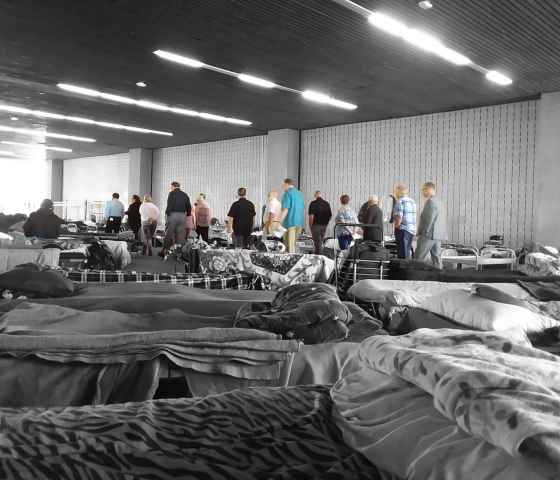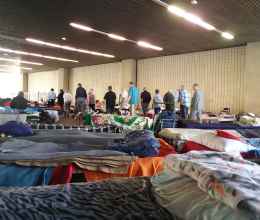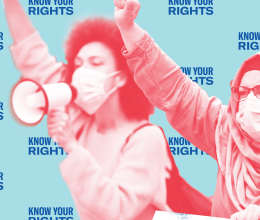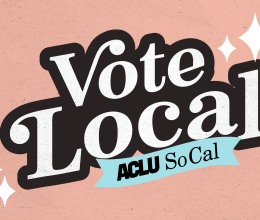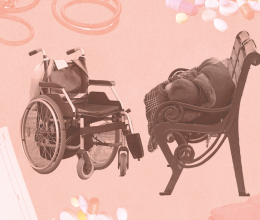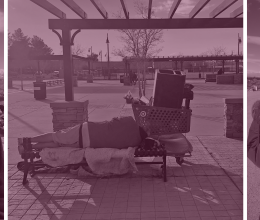April 13, 2020
Governor Gavin Newsom
1303 10th Street, Suite 1173
Sacramento, CA 95814
Re: Urgent Executive Order on Depopulating Shelters, Commandeering Hotels
Dear Governor Newsom:
We, the undersigned organizations, advocate for and serve unhoused individuals across the state. We are very concerned about the health and safety of individuals experiencing homelessness during the COVID-19 crisis. Despite the announcement of Project Roomkey on April 3, 2020, local jurisdictions have yet to move significant proportions of their unsheltered populations into individual housing units. At the same time, we are seeing the spread of COVID-19 among unhoused people throughout California and the United States, including an outbreak in a shelter in San Francisco in which 91 residents and staff have tested positive for COVID-19.
It is now clear that more expansive state action is needed to protect people experiencing homelessness during the COVID-19 pandemic. Project Roomkey was a laudable first step, but progress at the local level has been too slow to match the urgency of the situation. Ten days later, you can and must do more to ensure that local governments have the assistance and incentives they need to protect this state’s most vulnerable residents. Unless you take additional, swift action, infection rates will grow, overwhelming hospital resources and leading to thousands of preventable deaths across the state.
We request that you immediately:
- Issue a revised Executive Order that prohibits the use of state COVID-19 funds for shelters or congregate living facilities.
- Require cities and counties to depopulate shelters. Issue guidance to localities expanding congregate shelter options as a response to COVID-19 to cease plans and prioritize acquiring individual housing units instead including through the use of local government authority to commandeer rooms.
- Provide the 25% match to FEMA funding to get hotels and motels open as soon as possible and provide reimbursement of localities’ expenditures for costs to date.
- Where cities and counties do not take decisive action in a timely fashion to depopulate shelters, exercise the Governor’s power to commandeer rooms.
- Require localities to report, on a daily basis, how many people have been moved from shelters, encampments, and residential hotels into hotels, motels, or other housing where quarantine is possible.
Homeless People Are at Significantly Higher Risk of Exposure and Negative Outcomes from COVID-19 Than the General Population
COVID-19 is rapidly spreading throughout the country, and unhoused individuals are at incredibly high risk of contracting the virus. Models show California’s coronavirus 2 peak will occur sometime between this week and mid to late May. will be vital to preventing widespread infection and death. The next two weeks
People experiencing homelessness have unique health risks that make them particularly susceptible to the virus. Dr. Margot Kushel, Director of the UCSF Center for Vulnerable Populations and an expert on the health effects of homelessness, notes that homeless individuals age far more rapidly than the general population. 3 As such, their health more resembles that of someone 20-25 years older. A person who has been living unsheltered is therefore at the same heightened risk of serious illness or death as a housed person who is 60 or older. The significant racial disparities in outcomes related to COVID-19 are amplified among the unhoused populations in California, as Black people and people of color are far more likely to be unhoused than white people.
In addition to the rapid aging of unhoused individuals, many other factors make them more at risk of contracting COVID-19, including lack of access to hygiene facilities, difficulty self-isolating due to living outdoors or in a congregate shelter, and limited access to medical care. 4 Because of this, there is an enormous risk of the virus spreading incredibly quickly through shelters, encampments, and SROs. One University of Pennsylvania study found that unhoused individuals infected with COVID-19 are twice as likely to be hospitalized, two to four times as likely to require critical care, and two to three times more likely to die from the virus than the general population. 5 Failure to take preventative steps and house all unhoused individuals will result in widespread infection, death, and will overwhelm our health care system.
Congregate Shelters are Dangerous Under the Current Circumstances
Despite the potentially devastating consequences of inaction, cities and counties across California have not made adequate progress in moving unhoused individuals into non-congregate shelter settings. Jurisdictions throughout California rely on congregate shelters to house the majority of their sheltered homeless populations. But even the threat of COVID-19 has become apparent, some jurisdictions continued to rely on this model, even expanding their shelter systems to bring unhoused residents inside. For example, in Los Angeles, the local government initially announced plans to set up 42 shelters in recreation centers. 6
It is now clear that congregate housing substantially increases the risk of exposure. 7 Congregate shelters group dozens and even hundreds of people into common living spaces, at a time when public health officials warn the public to avoid gatherings of any size. Rarely, if ever, do congregate shelters provide adequate space to social distance and to stop the spread of COVID-19. Residents of California’s shelters sleep in beds, on cots, or on mats that are mere feet from each other. They share bathrooms and dining facilities. Reports from inside shelters show they are not being sanitized properly despite widespread knowledge and CDC guidance on disinfecting to prevent the spread of the virus. For example, one shelter resident in Southern California reports that 200 people were forced to use one bathroom with one soap dispenser; the bathroom was not cleaned and was covered in feces and blood. A 61-year old immunocompromised woman on oxygen reported that she was screened to get a motel voucher over two-weeks ago, but she remained in the congregate shelter with no estimate of when she could move into a safe hotel room. She described her biggest fear as dying in the shelter.
We have already seen the devastating effect of failing to act quickly to de-densify shelters. On April 10, 2020, 70 people tested positive for the virus at a congregate shelter in San Francisco; three days later city officials announced that number had increased to 91.9 At least 9 unhoused individuals in Los Angeles have tested positive for COVID-19, including some who were living in congregate shelters.10 Outbreaks like this will be seen at shelters across the state, unless you take the necessary preventative measures to stop and slow the spread.
Cities and Counties Face Financial and Political Obstacles to Addressing this Issue Without Further State Support
Despite increasing recognition that the failure to move individuals into noncongregate housing could have devastating consequences for communities, most jurisdictions throughout California are struggling to do so. 11 They face financial and political barriers, but these obstacles are surmountable with state intervention that your office can provide immediately.
First, the state should no longer allow state or federal funding to be used for congregate shelters during the COVID-19 crisis. They are putting people at risk and localities must quickly pivot away from them by moving shelter residents to motels. Jobs of shelter staff can be protected by moving services to hotels as well.
Second, the state must supplement FEMA funds. FEMA will only reimburse 75% of the cost of non-congregate sheltering for individuals who are positive for COVID-19, have been exposed to COVID-19, or who are at “high risk” of negative outcomes from the virus. But this funding is insufficient.
For individuals who fall within FEMA’s criteria, the state should cover the remaining 25% of the cost of hotel rooms, by directing localities to use pre-COVID-19 homelessness funding and expanding allocations. Anecdotally, jurisdictions have been reticent to use this money to provide short-term interventions to this emergency.
Efforts by state and local governments must provide individual housing to homeless individuals far beyond those groups identified in the FEMA criteria if such an effort is to be effective in protecting individual and community health. Many unhoused people will struggle to prove they have been exposed to the virus, or that they fit within FEMA’s narrow definition of high-risk. Without widespread testing, these criteria are difficult to implement, and in the meantime, the virus is swiftly spreading. Public health experts have clearly stated that housing everyone in individual housing units is the only way to prevent widespread infection and death among unhoused populations.12
In addition to financial obstacles, jurisdictions face political resistance, both from hotels and from housed residents who live in the vicinity of potential sites. Even the cities that have made efforts to secure hotel rooms have been dragged into negotiations with hotels over a series of concerns ranging from hotel image to fear of damage to rooms.13 Local jurisdictions need your leadership now to move these negotiations to closure.
As Governor, You Have the Ability to Address These Issues by Taking Further Emergency Steps
As Governor, you have the authority to take further steps at the statewide level to assist local governments. Specifically, you should direct jurisdictions to de-densify shelters to ensure they are compliant with most current public health guidance. Project Roomkey was designed to provide incentives to jurisdictions to do so, but they are simply not acting quickly enough to mitigate the harmful effects of congregate shelters.
Second, you should increase funding available for Project Roomkey, and use state funding to reimburse any costs not covered by FEMA or other federal reimbursements. Using a reimbursable funding model would provide local jurisdictions with assurances that the money will be available and also incentive these jurisdictions to use the money quickly, since securing hotel rooms would be the only way to obtain these funds. And a commitment from the state to cover housing costs beyond 75%, and to include housing for people outside the current hard-to-implement FEMA categories, would go a long way toward ensuring that all residents who need it are provided shelter.
Providing a guarantee to jurisdictions to cover costs may also help to empower jurisdictions to exercise their local authority to commandeer hotel rooms. When hotel rooms are commandeered, the exact amount of “just compensation” can only be estimated, since the actual cost it is determined through a noticed hearing after the emergency has ended. State funding will assure local governments that they will not face uncertain general fund expenditures in the future, and is critical to ensuring that local jurisdictions are able to take this step.
Finally, you also have the authority to remove barriers to bringing hotels on board. As you are aware, the California Government Code states that your emergency powers include the power to “commandeer or utilize any private property . . . deemed by him necessary in carrying out the responsibilities hereby vested . . .” Cal. Gov. Code § 8572; see also Cal. Gov. Code § 8565 et seq. (Describing Governor’s emergency powers). Your State of Emergency declaration on March 4, 2020 in response to the COVID-19 crisis allows you to commandeer hotel rooms to respond to the crisis at hand.
The ability to commandeer private property to protect the public welfare is also a long-held, constitutional power. U.S. Const. amend. V; Cal. Const. art. I, § 19. Commandeering hotel rooms to allow unhoused individuals to safely shelter in place throughout the COVID-19 crisis fits squarely with why this power is granted to the government. We implore you to utilize this power to immediately house all individuals experiencing homelessness in California.
Commandeering hotel and motel rooms, rather than negotiating rentals, would be both cost- and time-efficient, while still ensuring that hotel and motel owners are afforded just compensation. Under the California and United States Constitutions, the government may not take private property without “just compensation.” In the case of both eminent domain proceeding and commandeering of private property during a declared emergency, the determination of that compensation comes after government has taken control of the property. In cases involving temporary takings, as in commandeering, “just compensation” is the “rental value of the property for the period of the taking.” Yuba Nat’l Res., Inc. v. United States, 904 F.2d 1577, 1580-81 (Fed. Cir. 1990). Damages, like the loss of profits or of goodwill are not recoverable. Id. at 1581-82; United States v. Gen. Motors Corp. at 379.
In the case of commandeering of a hotel, the cost to the public would be fixed on the basis of the room rentals the hotel might have received but for the commandeering. The extremely high vacancy rates in the hotel or similar properties during the period of government control in this emergency would limit the rental value of the rooms far below the rates the hotel was able to charge before the pandemic and declaration of emergency.14
Only leadership at the state level will stop mass COVID-19 outbreaks and death
California has led the nation in flattening the curve and demonstrated the state is willing and able to take all necessary measures to ensure we save as many lives as possible during the pandemic. Yet very little has been done to prevent the spread of COVID-19 among our unhoused population. Cities and counties are facing financial and political roadblocks that prevent them from taking the necessary steps to save lives. California localities need continued, strong leadership and support from the state.
The time for negotiating with hotels has passed. The fear, politics, and financial obstacles that have delayed action to depopulate shelters and put all unhoused individuals in hotels has created dangerous and deadly circumstances. We urge you to use all powers at your disposal and ensure no further outbreaks occur.
Sincerely,
American Civil Liberties Union of California
Coalition on Homelessness
Homeless Action Center
Lawyers’ Committee for Civil Rights of the San Francisco Bay Area
Legal Aid Foundation of Los Angeles
Western Regional Advocacy Project
Western Center on Law and Poverty
1. Joshua Sabantini, “More test positive for COVID-19 at shelter as total cases pass 950 in SF,” San Francisco Examiner (April 13, 2020), https://www.sfexaminer.com/news/more-homeless-and-staff-test-positive-fo... at-shelter-as-total-cases-pass-950-in-sf/; Benjamin Oreskes, “Coronavirus spreads in Los Angeles’ homeless community,” Los Angeles Times (April 2, 2020), https://www.latimes.com/california/story/2020-04-02/coronavirusin-l-a-ho... Nikita Stewart, “It’s a time Bomb: 23 Die as Virus Hits Packed Homeless Shelters,” April 13, 2020,https://www.nytimes.com/2020/04/13/nyregion/new-york-coronavirushomeless... (describing outbreaks and deaths at homeless shelters in New York). ↑ Go back
2. IMHE, “COVID-19 Projections,” (April 10, 2020), https://covid19.healthdata.org/united-states-ofamerica/california; Jayson Chesler and Phillip Reese, “See how California’s battle against coronavirus is progressing – in 6 charts,” Sacramento Bee (April 8, 2020), https://www.sacbee.com/news/coronavirus/article241845421.html ↑ Go back
3. See Heather Knight “Fast-aging homeless population may lead to public health crisis.” San Francisco Chronicle (March 5, 2016), https://www.sfchronicle.com/bayarea/article/Fast-aging-homeless-populati.... ↑ Go back
4. See Emily Shapiro, “Coronavirus and the homeless: why they’re especially at risk, ways to stop spread like ‘wildfire,’” ABC News (March 11, 2020), https://abcnews.go.com/Health/coronavirus-homeless-risk-ways-stopspread-.... ↑ Go back
5. Dennis Culhane et al., “Estimated Emergency and Observational/Quarantine Capacity Need for the US Homeless Population Related to COVID-19 Exposure by County; Projected Hospitalizations, Intensive Care Units and Mortality,” University of Pennsylvania (Match 27, 2020), https://endhomelessness.org/wpcontent/uploads/2020/03/COVID-paper_clean-... ↑ Go back
6. Davis Zahniser, Laura Nelson, and Dakota Smith, “L.A. to add 6,000 shelter beds for homeless Angelenos in hopes of slowing virus’ spread,” LA Times, March 18, 2020, https://www.latimes.com/homelesshousing/story/2020-03-18/coronavirus-hom.... Since the announcement, the City of Los Angeles has dramatically reduced the number of beds in each shelter to account for social distancing. The current projected scope of the project is approximately 2000 beds ↑ Go back
7. For example, studies have found that far more people than originally understood can be asymptomatic but still spread the disease. See e.g., Tara John, “Iceland lab’s testing suggests 50% of coronavirus cases have no symptoms,” April 3, 2020, https://www.cnn.com/2020/04/01/europe/iceland-testing-coronavirus-intl/i... see also National Research Council 2020. “Rapid Expert Consultation on the Possibility of Bioaerosol Spread of SARSCoV-2 for the COVID-19 Pandemic,” (April 1, 2020). Washington, DC: The National Academies Press. https://doi.org/10.17226/25769 (finding that COVID-19 spreads through bioaerosols when a COVID-19 positive individual exhales). ↑ Go back
8. Eve Garrow, “There is enough housing for people unhoused, we must act now,” ACLU Southern California (April 6, 2020), https://www.aclusocal.org/en/news/there-enough-housing-people-unhoused-w... ↑ Go back
9. Julian Mark and Lydia Chávez, “’Outbreak’ at SF’s largest homeless shelter, as 70 test positive for COVID-19,” Mission Local (April 10, 2020), https://missionlocal.org/2020/04/outbreak-at-sfs-largest-homeless-shelte... test-positive-for-covid-19/; Sabantini, infra note 1. ↑ Go back
10. Oreskes, infra note 1. ↑ Go back
11. See e.g., Manny Sandoval, “San Bernardino City Council refuses to house homeless in Hospitality Lane hotel during COVID-19 crisis,” Inland Empire Community News (April 7, 2020), http://iecn.com/san-bernardino-citycouncil-refuses-housing-homeless-in-h... (San Bernardino City Council members refuse to house county unhoused residents); “Coronavirus Update: Alameda County Moves Some Homeless To Hotel Rooms In Oakland,” CBS SF Bay Area (April 9, 2020), https://sanfrancisco.cbslocal.com/2020/04/09/coronavirus-update-alameda-... (Only 70 of Alameda County’s 8,022 unhoused individuals have been moved into hotels). ↑ Go back
12. Vivian Ho, “Wasted time: how San Francisco failed its homeless population amid coronavirus,” The Guardian (April 8, 2020), https://www.theguardian.com/world/2020/apr/08/san-francisco-coronavirus-... ↑ Go back
13. See Laylan Connelly, “Plan scrapped for housing homeless with coronavirus at Ayres Hotel near Laguna Woods,” Orange County Register (April 6, 2020), https://www.ocregister.com/2020/04/06/plan-scrapped-for-housinghomeless-.... ↑ Go back
14. See Melissa Wiley, “Nearly 80% of hotel rooms across the US are empty because of the coronavirus outbreak,” Business Insider (April 9, 2020), https://www.businessinsider.com/nearly-80-percent-us-hotel-rooms-emptyco.... ↑ Go back
